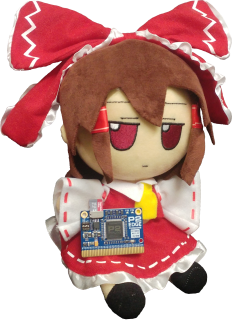Hardware Bugs & Errata
This is a list of known hardware bugs in the current Propeller 2 Hardware (P2X8C4M64P Rev. C) All titles/headings are tenative.
- Incorrect PTRx update on Block Transfer with ALTx or AUGD
- ALTS + AUGS bug
- Crystal Oscillator crosstalk
- RDFAST startup bug
- Dual-Port RAM simultaneous read+write Hazard
- BRK ignores condition code
- Composite video encoder design flaws
Incorrect PTRx update on Block Transfer with ALTx or AUGD
Intervening ALTx/AUGS/AUGD instructions between SETQ/SETQ2 and RDLONG/WRLONG/WMLONG-PTRx instructions will cancel the special-case block-size PTRx deltas. The expected number of longs will transfer, but PTRx will only be modified according to normal PTRx expression behavior:
SETQ #16-1 'ready to load 16 longs
ALTD start_reg 'alter start register (ALTD cancels block-size PTRx deltas)
RDLONG 0,ptra++ 'ptra will only be incremented by 4 (1 long), not 16*4 as anticipated!!!
(from official docs)
ALTS + AUGS bug
Intervening ALTx instructions with an immediate #S operand, between AUGS and the AUGS' intended target instruction (which would have an immediate #S operand), will use the AUGS value, but not cancel it. So, the intended AUGS target instruction will use and cancel the AUGS value, as expected, but the intervening ALTx instruction will also use the AUGS value (if it has an immediate #S operand). To avoid problems in these circumstances, use a register for the S operand of the ALTx instruction, and not an immediate #S operand.
AUGS #$FFFFF123 'This AUGS is intended for the ADD instruction.
ALTD index,#base 'Look out! AUGS will affect #base, too. Use a register, instead.
ADD 0-0,#$123 '#$123 will be augmented by the AUGS and cancel the AUGS.
(from offical docs)
Crystal Oscillator crosstalk
When using a passive crystal oscillator across XO/XI, it is possible to introduce clock glitches by outputting high-frequency digital signals on the P28..P31 I/O group.
Can be worked around by using an active oscillator part instead.
See forum post
RDFAST startup bug
When RDFAST is used in no-wait mode (Destination[31] set), other hub memory instructions like RDLONG can behave in unexpected ways while the FIFO is starting up in the background. It appears that read instructions can skip execution entirely.
See also: Bypassing DEBUG protection
Dual-Port RAM simultaneous read+write Hazard
The dual-port RAM blocks making up Cog RAM can, when the same memory location is read and written at the same time, return an inderminate value to the reading port, where some bits belong to the newly written value and some belong to the previous one. This effect depends on the exact RAM cell used and the current clock frequency.
In particular, this simultaneous read+write conditon is created in Cog RAM by self-modifying code with exactly one other instruction between the modification and the instruction being modified:
SETD .x,#123 ' ----\
NOP ' | SETD result written on same cycle as ADD opcode fetch!!!
.x ADD 0-0,#1 ' <-----/
This pattern is very common in P1 code, so take care when porting!
BRK ignores condition code
The BRK instruction always triggers an interrupt, regardless of any condition code applied to it. If the condition code is false however, the break code in Destination is NOT latched and the previous value is retained. Other cases where a BRK instruction is cancelled in the pipeline, such as a set SKIP bit or being placed after a taken branch do correctly avoid triggering the interrupt.
Composite video encoder design flaws
While generally functional and of decent quality, there are a few issues affecting the composite video encoder (part of the Colorspace Converter) that make it less than ideal.
DAC range issue
The P_DAC_75R_2V 75Ω DAC mode only provides a 1V peak-to-peak range. This is ideal for a luminance+sync signal (as in S-Video/YPbPr/SoG), but composite modulation can exceed that range. In particular, 100% saturated yellow should have its modulation peak slightly above white level. This can be worked around by using the higher-impedance P_DAC_124R_3V mode.
Clamping issue
None of the colorspace operations are internally clamped, including the final sum of luma+chroma in the composite video path. Can be worked around by careful choice of coefficients.
No simultaneous RGB+Composite video mode
This would be required for a spec-compliant SCART output.
No crosstalk filter
Lack of luma/chroma crosstalk filters causes excessive dot crawl and false color artifacts. Could be worked around by using S-Video mode in conjunction with external analog filters (untested).
